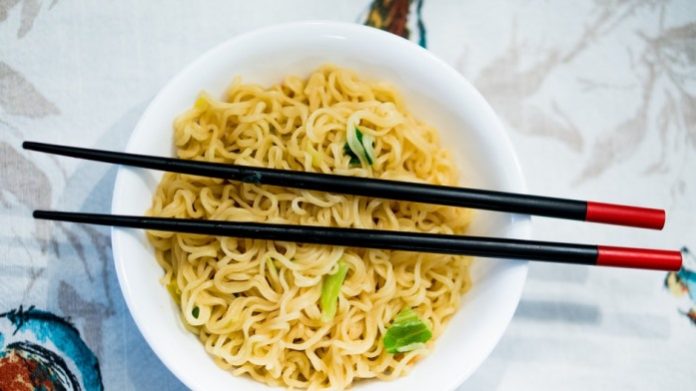As students start pouring into campuses this week, sales of ramen noodles are sure to skyrocket. The cheap, nearly instant meal is a popular choice whether it’s a post-drinking snack or slurped hastily over a pile of books during a cramming session. But it also has to taste good, and that has a lot to do with the noodle texture.
Now, a collaboration between Professors John Page and Martin Scanlon at the University of Manitoba and David Hatcher at the Canadian Grain Research Laboratory (CGRL) has resulted in a new method to make sure your bowl of ramen in consistently tasty.
Ultrasound
The process relies on ultrasound waves too high in frequency for humans to hear. By measuring the reflected wave after it has hit the sheet of noodle dough, the firmness of the dough can be determined without any direct contact. Firmness is closely related to texture and mouthfeel – both key to a noodle’s success.
You might be familiar with ultrasound for other applications. Its ultrasound that enables that recognizable, fuzzy-looking, sonogram of your unborn baby. Ultrasound is also used in non-destructive materials testing, like the inspection of welded joints.
“We are applying the same mechanical engineering principles used to assess building skyscrapers to the wet noodle,” says Hatcher.
Importantly, the fact that this ultrasound method is non-contact allows measurements to be taken easily while the dough is being processed. “We can then enable the process to be adjusted in real time in order to optimize the consistency of the noodle,” explains Paige. This is especially important because noodles are made from a living wheat plant, and variability in biological feedstocks is unavoidable. This method could ensure any variability in the wheat stocks would not be translated to the noodles.
The business of noodles
As a research scientist at the CGRL, Hatcher has spent the last 32 years studying the application of Canadian wheat to Asian markets, with particular emphasis on noodles. His job is to determine how the wheat variety, through its proteins and starches, affects noodle colour, visual appeal and texture. He can then help plant breeders optimize their wheat for noodles.
“Asia is Canada’s biggest customer of wheat, so it is critical that we know what is important to them from a product perspective,” says Hatcher.
They even produce their noodles in a room where the temperature and humidity are controlled to mimic the Asian environments where the noodles would be manufactured.
Accurate physical methods to measure and assess noodle quality, such as this one, are also crucial. Hatcher thinks it’s about time food science caught up to other fields. “The application of physics to food is not as popular as it should be.”
But maybe the best part of doing research on noodles? Getting to eat your experiments.








































